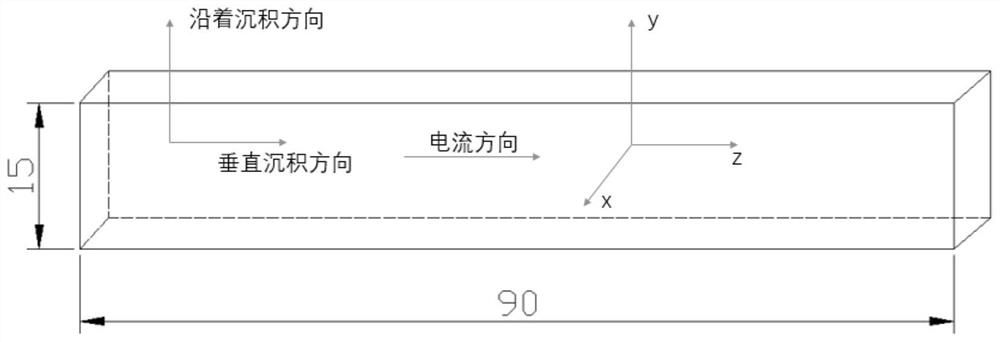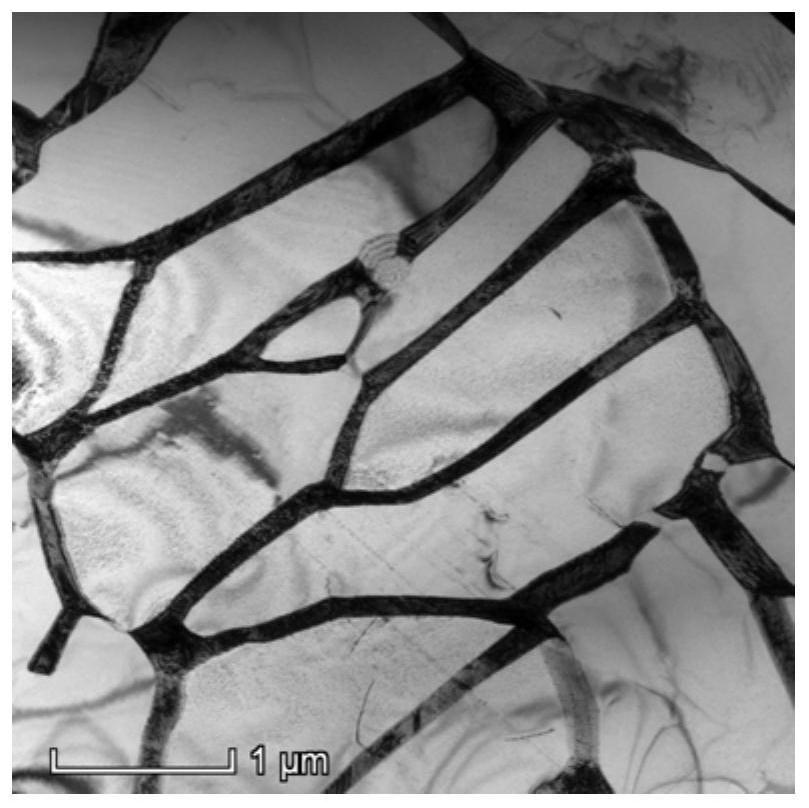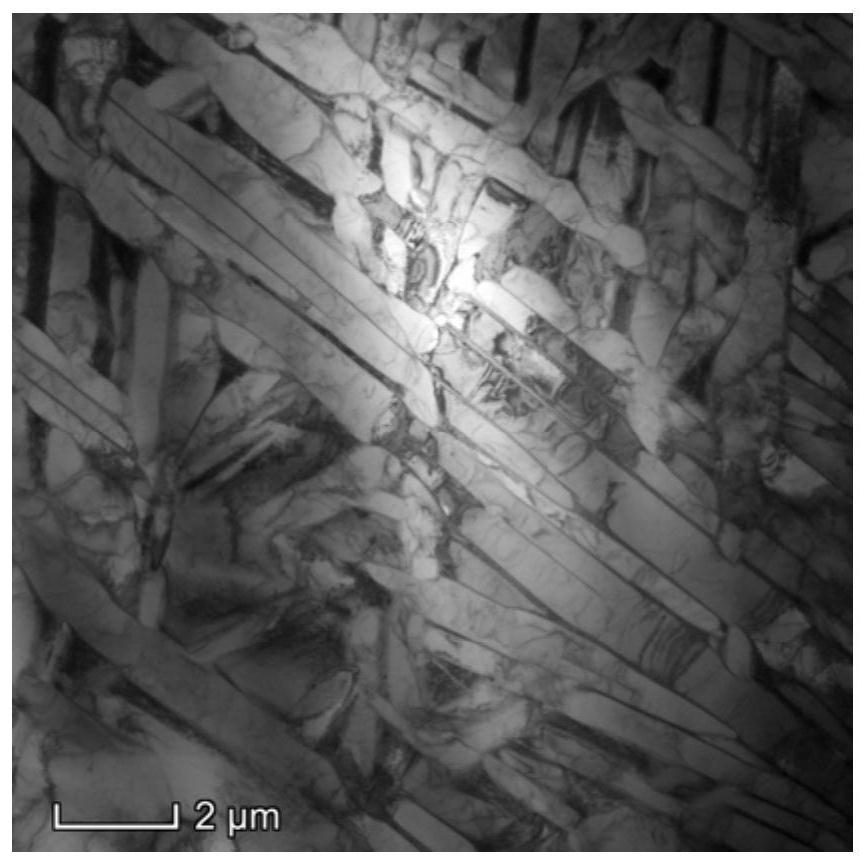Method for improving anisotropy of additive manufacturing titanium alloy through pulse current
A technology of additive manufacturing and pulse current, which is applied in the direction of additive manufacturing, additive processing, and process efficiency improvement, and can solve the problems of complex process, long time consumption, and high energy consumption.
- Summary
- Abstract
- Description
- Claims
- Application Information
AI Technical Summary
Problems solved by technology
Method used
Image
Examples
specific Embodiment approach 1
[0028] (1) Ti6Al4V alloy components were prepared by laser direct deposition technology. Clean the deposited surface and remove the metal particles adhering to it.
[0029] (2) Cut the above-mentioned Ti6Al4V alloy member along the deposition direction to obtain a cuboid member with a length of 45 mm, a height of 15 mm, and a thickness of 3 mm.
[0030] (3) Fix the above-mentioned workpiece through a pure copper fixture, and then connect the two ends of the pulse power supply with a pure copper wire to keep the complete contact between the fixture and the workpiece, and avoid excessive resistance at the joint;
[0031] (3) Place the clamped component horizontally on the pulse current workbench;
[0032] (4) Parameters are set, and a pulse current of 130V / 350Hz is applied to the above-mentioned components. Cut off the power supply of the device after 20s counted from the power on.
[0033] (5) Remove the workpiece after cooling to room temperature.
[0034] figure 1 It is ...
specific Embodiment approach 2
[0039] The difference between this embodiment and Embodiment 1 is that the alloy is prepared by laser selective melting deposition technology in step (1).
specific Embodiment approach 3
[0041] The difference between this embodiment and Embodiment 1 is that the alloy is prepared by electron beam additive manufacturing technology in step (1).
PUM
 Login to View More
Login to View More Abstract
Description
Claims
Application Information
 Login to View More
Login to View More - R&D
- Intellectual Property
- Life Sciences
- Materials
- Tech Scout
- Unparalleled Data Quality
- Higher Quality Content
- 60% Fewer Hallucinations
Browse by: Latest US Patents, China's latest patents, Technical Efficacy Thesaurus, Application Domain, Technology Topic, Popular Technical Reports.
© 2025 PatSnap. All rights reserved.Legal|Privacy policy|Modern Slavery Act Transparency Statement|Sitemap|About US| Contact US: help@patsnap.com



